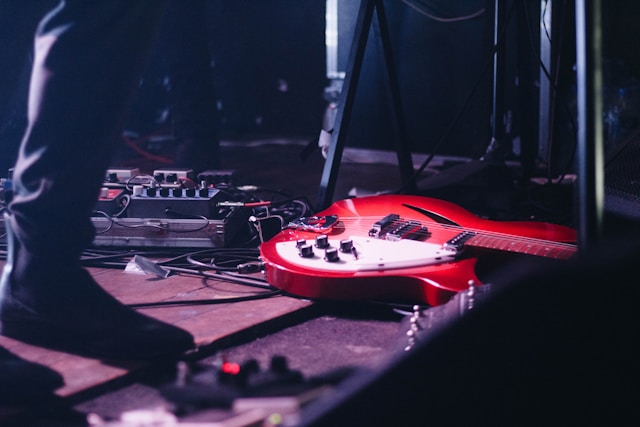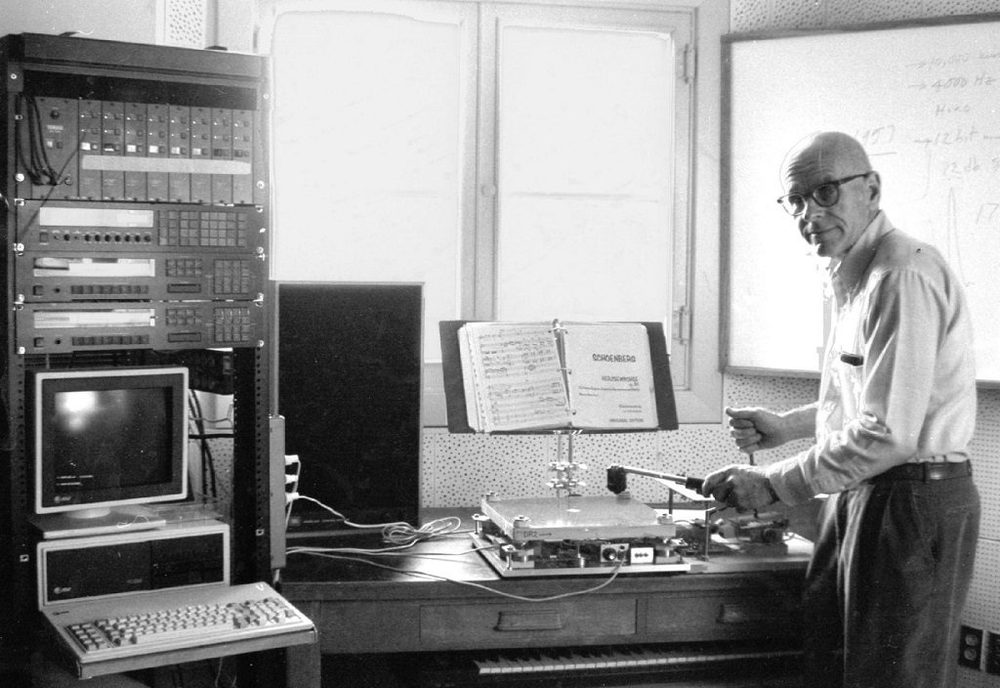Rock ‘n’ roll, born as a cultural revolution, is characterized by a strong beat and simple melodies. Its classic sound is a blend of rhythm and blues (R&B) and country music, usually built on a 12-bar structure with instruments like guitar, bass, and drums. The genre relies heavily on live instruments, strong chords, and driving rhythms.
At its peak, rock and roll aimed to be non-trivial music, its purpose was to threaten, set boundaries, defy, and win young people over to its view and its ethos. It was an important component in the development of teenage leisure and culture in the 1950s.
Based on this, the question arises: does rock and roll remain a living genre, evolving and retaining its rebellious spirit, or has it primarily become a cultural heritage and a museum exhibit?
Historical Context
Beginnings: 1950s – R&B + Blues + Country + Youth + Counterculture
The rock and roll revolution began in the early 1950s. Before its arrival, American music consisted mainly of rhythm and blues and jazz. Jazz and blues later evolved into bluegrass and country music. When large bands found it difficult to travel, they became smaller, eventually consisting only of drums, a guitar, a bass, a piano, a saxophone or a trumpet, and a vocalist to make traveling more efficient. This new sound from just the instruments introduced a new style: early rock music, or Rockabilly, was born.
Crucially, rock music initially existed primarily in black culture and was adopted by white musicians later in the late 50s. The Great Migration (the mass movement of African Americans) contributed to the transmission of “new” genres like rhythm and blues (R&B). The “blues” style, along with spirituals and gospel music, was previously grouped into the generalized category of “race records”, until it was rebranded as R&B in the late 1940s. Figures like Chuck Berry (a black musician who started his career in 1955) paved the way for later major names. English teachers noted that rock music wouldn’t exist without the black community, as all its roots trace back to black music and culture.
Golden Eras / Transformations (Rock 60s, 70s, 80s, 90s)
In the 1960s, the popularity wave of rock only increased. This was largely due to the British Invasion with bands like The Rolling Stones, The Kinks, and The Beatles. British artists approached American music with fresh and innovative interpretations, leading to a musical renaissance and firmly establishing the UK on the rock and roll map. In the 60s, The Who introduced a heavier and more rebellious sound with an emphasis on guitars.
The 1970s are considered the most important decade for rock, as this is when a large number of subgenres originated. Country rock and folk rock emerged with artists like Bob Dylan and The Eagles. The late 70s introduced the first wave of punk rock and a heavier style, or metal, with bands like AC/DC and Aerosmith. The sheer amount of subgenres from this era set up future artists.
In the 1980s and 1990s, rock remained significant, but other genres began to take center stage. Pop music megastars emerged, such as Madonna, Michael Jackson, Whitney Houston, and Prince. Although bands like Nirvana, Green Day, and Alice in Chains still dominated the rock scene in the 90s, hip-hop, pop, and R&B began to gain greater prominence.
How “Museumification” Manifests Today
Museums, Hall of Fame, Artifact Exhibitions, Archives — How Rock is “Preserved”
Museums play a central role in institutionalizing popular music heritage. These institutions display specific versions of popular music history through permanent and temporary exhibitions and specialized visitor experiences. Research indicates that the growing number of popular music exhibitions raises questions about its “museumification”. The relationship between popular music and the museum highlights the museum’s role in repositioning popular music from its former status as a profane culture to its more recently acquired status as cultural heritage.
The process of turning popular music into cultural heritage (heritagisation) involves creating entire museums, such as the Rock and Roll Hall of Fame and Museum (RRHoF) in Cleveland. The RRHoF exemplifies the “Authorized Heritage Discourse” (AHD), which typically comprises tangible, monumental, and ideologically “correct” heritage. AHD operates to naturalize assumptions about the nature and meaning of heritage.
However, archival research is often used to deconstruct AHD. For instance, the RRHoF has been criticized for cultural (mis)representation and sanitization, as the official discourse may ignore or omit histories, such as those of black teenagers and radio broadcasters in the 1950s. Moreover, African-American idioms like blues and R&B are often mythologized in museums as “roots” or “primitive” forms that allegedly evolved into the “more mature rock music performed by white men”. Thus, rock is “preserved” as a specific canon focused on the “thickening” of history around particular artifacts and myths.
How Old Bands / Classic Rock Legends Dominate Media / Festivals / Platforms
Myths often become entrenched and concretized as the “official” history. For example, the narrative that DJ Alan Freed and record store owner Leo Mintz “invented” the phrase “rock ‘n’ roll” is mythical; they more accurately rebranded R&B to avoid the “racial stigma” and marketed it as rock ‘n’ roll.
Archival and promotional materials often reiterate these myths, focusing on figures like Freed. This focus on legends overshadows the contributions of marginalized communities. For example, the success of the white DJ Freed obscured the legacy of William “Walkin’ Talkin’” Bill Hawkins, who was the first black DJ in Cleveland and influenced a generation of DJs, including Freed himself. The dominance of old legends in heritage narratives is therefore a key manifestation of “museumification”.
Signs That Rock is Still Alive
While rock and roll may not be as popular as it once was, it is not dead.
Contemporary Artists Who Incorporate Rock Elements (Alternative Rock, Indie Rock, Post-Punk, Retro Rock)
There are artists today who sustain the genre. Some contemporary bands maintain a classic approach to songwriting, using the basic instruments found in 80s bands, rather than relying on technologies like drum machines.
A prominent example is the band Greta Van Fleet, which draws inspiration from classic 1970s rock. They, along with Rival Sons and Dirty Honey, are bringing a vintage sound back into modern music. Greta Van Fleet’s popularity helped draw attention to other bands sharing a similar style, leading the “classic rock revival”. The band Imagine Dragons is also noted for using instruments to create unique music, and they are considered good, modern rock music.
Revival of Interest: Festivals, Vinyl, Internet Communities, Nostalgia
Thanks to social media and music streaming applications, people who are genuinely passionate about heavier rock have access to many more artists.
Furthermore, popular bands from the 90s, and even some 60s acts, are still active and highly popular. Events, such as the passing of Foo Fighters drummer Taylor Hawkins, can bring the spotlight back onto rock. Supporters of rock must be ready to “find and follow it”.
Arguments Raising Doubts
Commercial Displacement: Pop, Hip-Hop, Electronic Flourish More
The main argument against rock’s dominance is that it is “just not anywhere near as popular as it used to be”. Other music types, such as pop, R&B, and especially hip-hop, have gained significant ground, with hip-hop having taken the lead for quite a while. Rock music started declining after the wave of pop and dance music in the 1980s.
Substitution of “Rock” with Brand and Style (Fashion, Aesthetics) without Internal Rebellion/Critique
Doubts are raised by the lack of “pure artists”. Critics argue that modern musicians often do not write the music themselves but rely on a team of professionals. While artists used to write and create music, technology now allows anyone with talent to become a singer. The “band feeling” that characterized the 60s, 70s, 80s, and even early 90s has disappeared.
This shift in the music creation process (reliance on technology, such as drum machines or pre-recorded instruments) suggests the genre may have lost its internal rebellious and critical spirit in favor of a commercial formula.
Youth Primarily Listen to Streams, Rap, Electronics; Genres Mix, and “Rock” Might Lose Clear Boundaries
Modern youth primarily listen to hip-hop. Although the availability of streaming platforms allows for the discovery of many artists, it also contributes to the mixing of genres.
Conclusion
Is rock alive? Based on the available data, rock and roll is both alive and “museumified.”
Its “museum side” is evident in its institutionalization through Halls of Fame and archives, which often solidify the “Authorized Heritage Discourse” (AHD). This process of preservation, particularly around origin myths, can overshadow complex racial and social histories and marginalize unheard voices, including those of black teenagers and artists.
However, rock and roll is not dead. It survives through dedicated followers who seek out non-mainstream forms, and through the revival of classic rock (e.g., Greta Van Fleet), which values traditional instrumentation and sound.
To prevent rock and roll from becoming merely a museum exhibit, it must continue to:
- Maintain its instrumental and artistic focus, challenging commercial pressure and reliance on technological substitutes for “live” musicianship.
- Re-examine its historical narratives, acknowledging the contributions of marginalized communities (especially black creators and consumers of R&B), who were its true originators.
It is possible that “rock and roll” has already transformed—like all cultural phenomena—and currently exists not in its original form, but in modified, flexible forms. Its commercial dominance has faded, yielding to hip-hop, but its ethos and musical form continue to live on in subgenres and revival movements.






